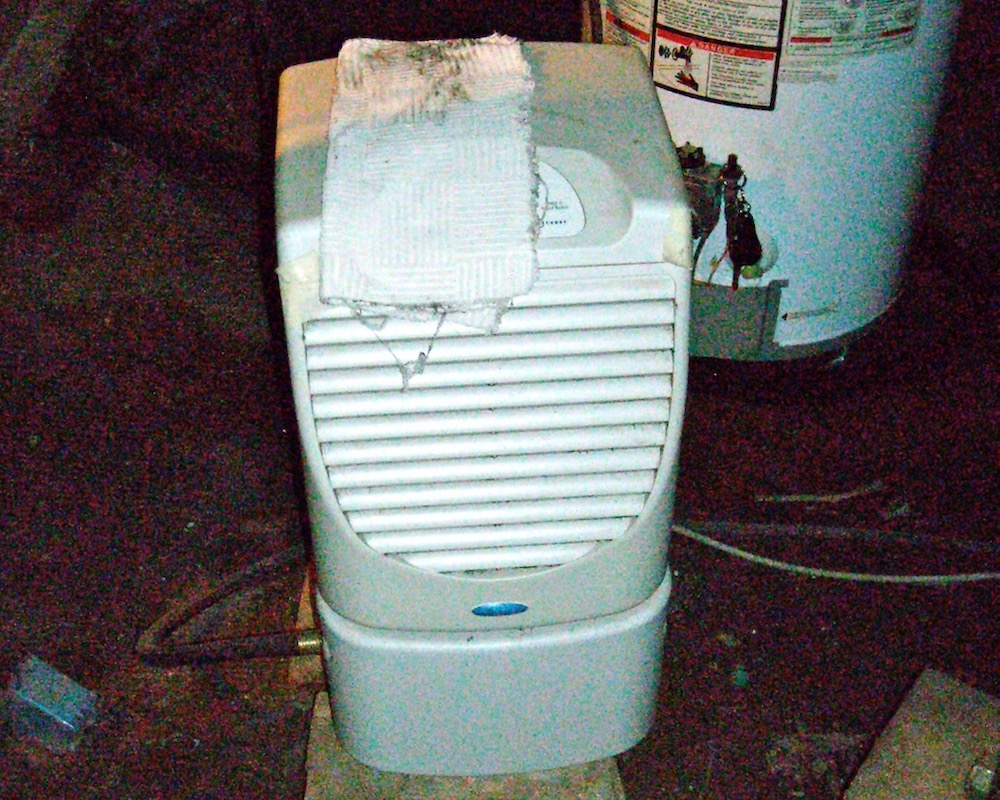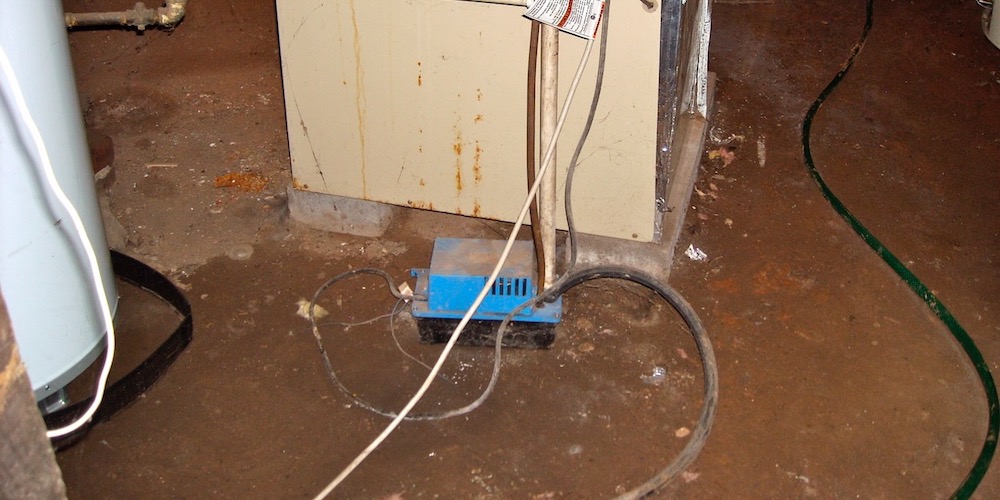Turn Off That Dehumidifier!

I was in a crawl space in Atlanta yesterday putting a new home energy rater through his field test and found that this home has a dehumidifier down below. Not surprisingly, it ran continuously the whole time I was there. If they were to pull the plug on that dehumidifier, they’d see no difference in the conditions in their crawl space.
Why isn’t this dehumidifier doing what the homeowners want it to do? Here are two good reasons:
- No dehumidifier can dehumidify all the air in Atlanta, which is what they’re asking this little one to do because the crawl space is vented to the outside.
- In addition to all the water vapor that comes in through the crawl space vents, the soil in the crawl space is wet and uncovered (photo below).

A typical ENERGY STAR dehumidifier uses 500 to 800 watts of power while it’s running. I didn’t measure it, but let’s be generous and say this one uses 600 W, or 0.6 kW. If it runs 24/7, it will gobble up 432 kilowatt-hours (kWh) in a month. At 10 cents per kWh, they’re paying over $40 a month—for nothing!
It would be interesting to gather real data on this by installing a hygrometer and a data logger to measure and record the relative humidity and the energy usage, but I already know what the answer would be. This dehumidifier is simply wasting their money.
The homeowners here realize that they have serious moisture problems under their house, and they’ve taken what seems to them a perfectly reasonable measure by installing the dehumidifier. Without understanding the building science and where the moisture is coming from, though, they’ve chosen a solution that’s bound to fail – and cost them over $500 per year.
The real solution to the problems in this home may include a dehumidifier, but the first step would be crawl space encapsulation. They’ve got to address the two main sources of water vapor before trying to remove it with a dehumidifier.
Until they’re ready to take that step, however, they should turn off that dehumidifier immediately.
Allison A. Bailes III, PhD is a speaker, writer, building science consultant, and the founder of Energy Vanguard in Decatur, Georgia. He has a doctorate in physics and is the author of a bestselling book on building science. He also writes the Energy Vanguard Blog. For more updates, you can subscribe to the Energy Vanguard newsletter and follow him on LinkedIn.
Related Articles
Measuring the Efficiency of a Room Dehumidifier
4 Ways Moisture Enters a Vented Crawl Space
An Unexpected Benefit of Encapsulating a Crawl Space
Comments are closed.
This Post Has 2 Comments
Comments are closed.

Do you know who in ATL can
Do you know who in ATL can fix this (without price gauging? ) – we’ve gotten many quotes but they range from 10-20K….seems ridiculous. Thanks
Simply amazing!
Simply amazing!